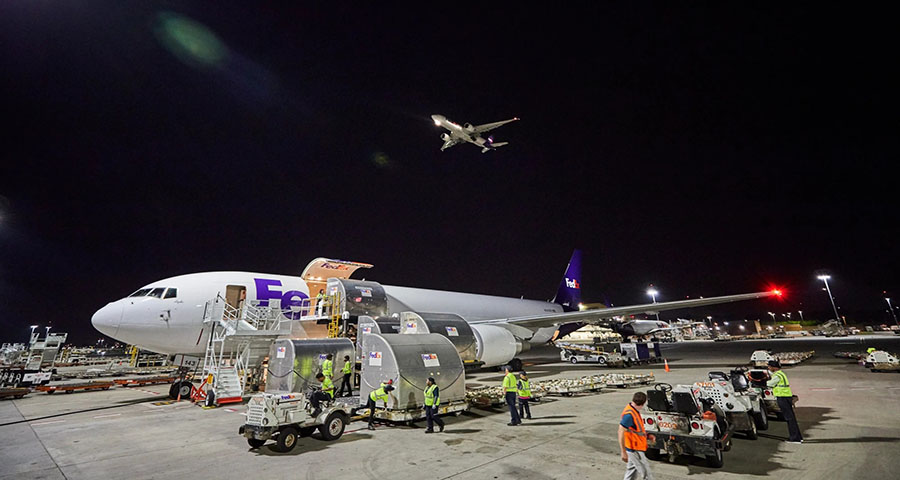Government Shutdown Forces FAA Flight Cuts, Putting Cargo Carriers on Alert
KEY POINTS
- FAA mandates phased 10% flight reductions at 40 major U.S. airports.
- FedEx and DHL assess potential operational impacts as UPS resumes operations after recent crash.
- U.S. Transportation Secretary warns of deeper reductions if staffing worsens.

The FAA has directed airlines to reduce flights by up to 10% at 40 major airports as the government shutdown continues, prompting logistics providers to monitor developments.
The Federal Aviation Administration (FAA) has directed airlines to scale back operations at 40 of the nation’s busiest airports by 10% as the government shutdown enters its sixth week, citing attempts to maintain flying safety amid growing absenteeism among unpaid air-traffic controllers.
The flight reductions are being phased in, starting with a 4% cut that took effect last Friday and increasing to 6% by Tuesday, 8% by Thursday, and 10% by the end of the week. The mandate applies to flights operating between 6 a.m. and 10 p.m.—hours that largely exclude overnight express cargo operations—and exempts international flights, according to air cargo officials. U.S. Transportation Secretary Sean Duffy warned Friday that additional cuts of up to 20% could be ordered if the government shutdown does not end, stating “we’re going to make decisions based on what we see in the air space”.
Industry executives said the restrictions are more likely to affect passenger carriers that also transport freight in aircraft bellies. “Because most U.S. domestic air freight moves in passenger aircraft, reductions in commercial routes will tighten capacity in those markets,” said Mike Short, president of global forwarding at logistics firm C.H. Robinson. He added that while some shipments can shift to trucks or chartered flights, short-term surges could increase costs and strain available equipment.
FedEx, which operates its main hub in Memphis, said it is “monitoring the FAA’s plans to adjust flight capacity” and has activated contingency measures to keep time-sensitive deliveries—such as pharmaceuticals and medical devices—moving across its integrated air and ground network.
UPS has not issued a statement regarding the FAA’s flight reduction order but has resumed operations at its Louisville hub following a freighter crash, temporarily relaxing on-time guarantees for express deliveries through Friday while two of the airport’s three runways remain open.
A DHL spokesperson said the company is assessing potential impacts of the FAA directive and stands ready to implement contingency measures if needed.
The FAA’s list of 40 airports slated for capacity reductions includes seven major cargo-dominant hubs:
- Memphis, Tennessee (FedEx)
- Louisville, Kentucky (UPS)
- Cincinnati-Northern Kentucky International Airport (DHL Express hub);
- Anchorage, Alaska (a major refueling station for carriers operating across the Pacific Ocean);
- Indianapolis (FedEx regional hub)
- Oakland, California (FedEx regional hub)
- Ontario, California (FedEx and UPS regional hub)
For more information, see:
FedEx, FedEx Statement on the FAA Directive, November 7
Reuters, US warns it could force 20% flight cuts if shutdown continues, November 7
Freight Waves, Cargo airlines, shippers face mixed impact from FAA flight restrictions, November 7
Federal Aviation Administration, Emergency Order Establishing Operating Limitations on the Use of Navigable Airspace, November 6